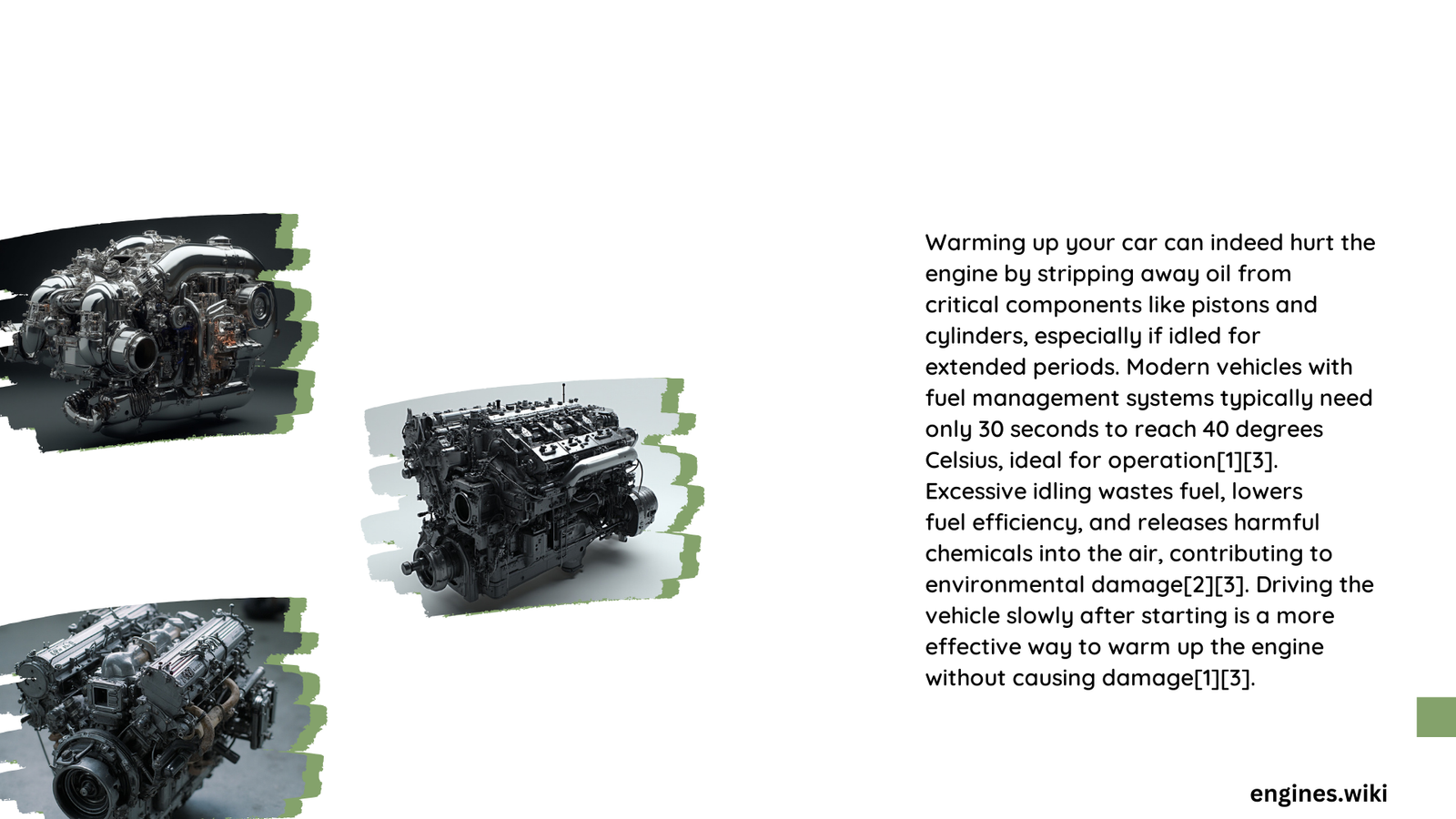Warming up your car can have both positive and negative effects on the engine. While it’s essential to allow the engine to reach its optimal operating temperature, excessive idling can lead to increased wear, fuel consumption, and environmental impact. Modern engines are designed to warm up quickly through gentle driving, making extended warm-up periods unnecessary and potentially harmful. This article explores the effects of warming up your car on engine health, optimal practices, and the risks associated with excessive idling.
What Are the Effects of Warming Up Your Car on Engine Wear?
Warming up your car affects engine wear in several ways:
- Oil Viscosity: Cold oil is thicker and doesn’t circulate as efficiently, potentially leading to increased wear on engine components.
- Metal Expansion: In engines with aluminum heads and iron blocks, temperature differences can affect head gasket clamping force.
- Blowby and Tappet Clearance: These factors can contribute to higher wear rates during the warm-up phase.
Impact on Engine Components
| Component | Cold Start Effect |
|---|---|
| Pistons | Increased friction due to tight clearances |
| Bearings | Higher wear rates until oil circulates fully |
| Valve Train | Reduced lubrication until oil reaches operating temperature |
How Long Should You Warm Up Your Car?

The optimal warm-up duration depends on several factors:
For Modern Gasoline Engines:
- Start the engine
- Allow it to idle for 15-20 seconds (about the time it takes to fasten your seatbelt)
- Begin driving gently
For Diesel Engines:
- Similar principle applies, but may require slightly longer warm-up due to higher compression ratios
- Still best to warm up through gentle driving rather than extended idling
In Extreme Cold Conditions:
- A slightly longer idle time (30 seconds to 1 minute) may be necessary to clear snow and ice
- Use this time to defrost windows and prepare the vehicle for safe operation
What Happens During Idle Time While Warming Up?
Idling during warm-up has several effects:
- Low RPMs: Idling keeps the engine at low RPMs, which is less efficient for warming up.
- Increased Fuel Consumption: Idling for 30 seconds often uses more fuel than restarting the engine.
- Carbon Buildup: Extended idling can lead to increased carbon deposits in the engine.
- Oil Stripping: In cold weather, idling can strip oil from pistons and cylinders.
Comparison: Idling vs. Gentle Driving
| Aspect | Idling | Gentle Driving |
|---|---|---|
| Warm-up Speed | Slow | Faster |
| Fuel Efficiency | Poor | Better |
| Engine Wear | Potentially Higher | Lower |
| Emissions | Higher | Lower |
What Are the Risks of Excessive Warming Up?
Excessive warming up can lead to several issues:
- Increased Engine Wear: Prolonged idling can cause more wear than normal driving.
- Environmental Impact: Extended idling releases harmful emissions.
- Fuel Waste: Unnecessary idling consumes fuel without providing benefits.
Potential Costs of Excessive Idling:
- More frequent oil changes
- Increased risk of engine component failure
- Higher fuel expenses
How Does Warming Up Affect Different Engine Types?
Different engine types respond differently to warm-up procedures:
Gasoline Engines:
- Warm up quickly with gentle driving
- Modern fuel injection systems adjust for cold starts
Diesel Engines:
- May require slightly longer warm-up times
- Benefit from a short idle period before driving in very cold conditions
Hybrid and Electric Vehicles:
- Electric motors don’t require traditional warm-up
- Battery systems may need warming in extreme cold
What Are the Best Practices for Engine Warm-Up?
To optimize engine health and performance:
- Start the engine and allow a brief idle (15-30 seconds)
- Begin driving gently, avoiding hard acceleration
- Use climate controls as needed for comfort and safety
- Allow the engine to reach full operating temperature through normal driving
Tips for Cold Weather Starts:
- Use the appropriate oil viscosity for your climate
- Keep your battery in good condition
- Consider using a block heater in extremely cold regions
How Does Warming Up Impact Fuel Efficiency?
Warming up your car affects fuel efficiency in several ways:
- Idle Fuel Consumption: Idling consumes fuel without moving the vehicle
- Cold Engine Inefficiency: Engines run less efficiently when cold
- Optimal Operating Temperature: Fuel efficiency improves as the engine reaches its ideal temperature
Fuel Efficiency Comparison:
| Condition | Relative Fuel Efficiency |
|---|---|
| Cold Idle | Lowest |
| Cold Driving | Low, but improving |
| Warm Engine | Optimal |
By understanding the effects of warming up your car on the engine, you can adopt practices that balance engine health, fuel efficiency, and environmental considerations. Modern engines are designed to warm up quickly through gentle driving, making extended warm-up periods unnecessary in most conditions.
